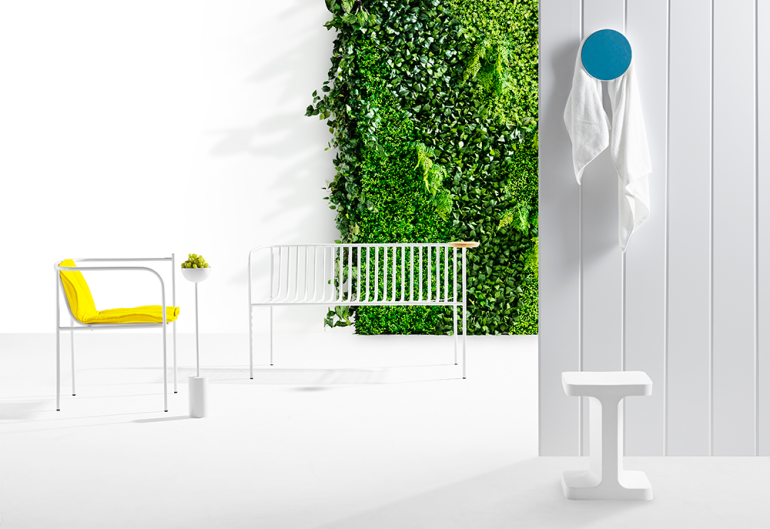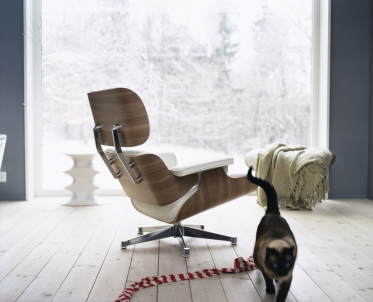
The Les Basic collection, by Brisbane-based designer Alexander Lotersztain brings together work, life and pleasure in response to the combined needs of life.
At home and abroad – ‘Australian design’ is a hot topic and recognition for our local furniture and lighting designers is on the up. Taking a moment to reflect on this, HouseLab explores were this momentum has come from and where it is headed.

Noritake tableware by Marc Newson, originally designed for the Qantas first-class cabins.
Of course, we couldn’t enter this discussion without considering Marc Newson – perhaps the most iconic of Australian designers, and most certainly one of the most well-known international designers – regardless of his origin. His influence has spread globally, his output prolific and his aesthetic has shaped everything from watches to kettles and everything in between. Now based in London, Newson started his career studying at the Sydney College of the Arts and his Lockheed Lounge put him, and Australia on the international map of design.

The Made In Ration collection designed by Tasmania-born Brodie Neill.
Digging deeper – but still in London, Tasmanian-born Brodie Neill, has been turning heads with his Made in Ratio collection. The complex timber forms resemble everything we love about mid-century modern with a contemporary twist and his Gyro table, made completely of discarded plastics found in the ocean, carries an important message about the effect design has on the planet.
Back home, the culture of design is also shifting with entire collections being released that are designed, and often-made, in Australia. The benefits of buying local are numerous with pieces being created for the specific needs of our lifestyles.

Adam Cornish's recent Seam collection for Tait is designed and made in Melbourne. Photograph by Haydn Cattach.
Obviously due to the harsh conditions of our environment and proximity to the ocean we have become leaders in outdoor furniture and with a transition to indoor-outdoor living the distinction of boundaries are blurred. Take Adam Cornish’s new Seam collection for Tait or Adam Goodrum’s Bilgola range for Nau as examples – both designed to withstand the elements but equally at home indoors.
It is this kind of considered response that makes Australian design worth investigating and ultimately, highly desirable. It also creates an eco-system of industry in a climate of need for the manufacturing sector. Adelaide’s Jam Factory identified this, with the downturn in local automotive industry and created a range of furniture and lighting that engages both their artisanal expertise and that of the regional manufacturing. So too did Argentinian-born Alexander Lotersztain when he engaged a shopping trolley manufacturer in Brisbane to produce a new collection of bent-wire furniture.

Charles Wilson's Carafe table for Herman Miller doubles as a dining table or desk.
Lotersztain, who is internationally recognised from his base in Queensland’s capital, has also created the Les Basic range – another response to our growing desire for well-designed objects. Accessible, aesthetically pleasing and incredibly diverse – the collection responds to our needs at home and at work in the same way Sydney-sider, Charles Wilson’s Carafe table for Herman Miller creates a platform to work and dine at home.

The Les Basic collection, by Alexander Lotersztain.
And on the topic of international brands, it is interesting to note that some of the biggest global manufacturers license production of their iconic pieces to local producers. Reverting back to Adelaide, a group of highly skilled makers are responsible for the production and assembly of selected Walter Knoll pieces here in Australia.. These pieces are the real thing – made with authority by local artisans at the Walter Knoll Factory with the added benefit of customisation in fabric and leather, through to how many guests can be seated at any one table you don’t just help yourself in supporting design – you support an entire industry.
_
For more on Noritake, Made In Ratio, Herman Miller, Les Basic and Walter Knoll CLICK HERE
For more on Adam Cornish's Seam collection CLICK HERE
And to discover the Nau collection CLICK HERE
WRITTEN BY HouseLab



